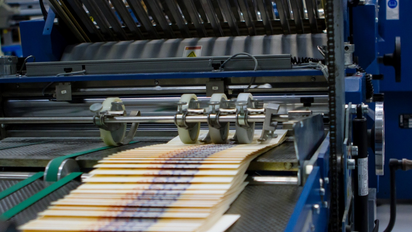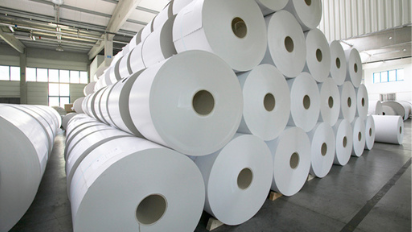The Latest
We’re all navigating unprecedented challenges with the influx of supply decreases, cost increases, and labor shortages. As the state of the production industry continues to cause major setbacks in getting direct mail out the door, here’s a brief overview of the 2022 landscape and ways you can adjust your strategy as you plan future campaigns.
What’s happening across the production industry?
PAPER & RAW MATERIALS
Paper mills are continuing to experience issues. After COVID-19 resulted in a significant decline in paper production, many paper mills across the world pivoted their product lines to packaging and other fiber-based products. As paper demand has increased since then, paper mills are struggling to keep up, with some being completely depleted of various types of paper and needing to reduce production.
Moreover, due to a variety of issues such as closures, lack of trucking, and overseas acquisitions, paper prices increased by 80% since January 2021. In 2022 alone, the cost of paper rose three times, each by 6-15%. And with national and global issues like inflation hitting a 40-year high and the ongoing Russia-Ukraine War, high demand, overall supply chain issues, and soaring gas and freight prices show no signs of slowing down. Translation: you can expect paper price hikes to continue into 2023.
And in part due to the scarcity of supplies, other raw materials such as envelope glue, ink, and label adhesives are all facing considerable price increases as we move through 2022.
POSTAL RATES INCREASE
Postal rates keep surging across the board as well. Since January 2021, postal rates have skyrocketed and will increase a total of 15.4%-19.6% come July. What’s more, USPS has set two postal rate increases per year beginning in 2023. If these price increases continue—and they show no sign of abating—postal rates are projected to surge 60% over the next five years.
SUPPLIER LABOR SHORTAGES
The production industry has been hit hard by the Great Resignation, which has resulted in labor shortages for suppliers across the country. With the rising cost of labor and an overall decline in the production workforce, the competition between suppliers to hire qualified workers is at an all-time high. These challenges are expected to persist for the foreseeable future, meaning many suppliers will need to further decrease their production and increase their prices.
What can you do?
Between the capacity reductions and market shifts, you’ll inevitably keep incurring higher costs and experiencing longer lead times. However, here are four things you and your agency can do now to make your production strategy work with these industry changes.
- Plan earlier—much earlier. With lead times being significantly longer, get orders in as early as possible. To ensure you’re on schedule, try to order with the maximum lead time available—give standard paper stocks 14-16 weeks, envelopes and specialty papers 5-6 months, and lettershops about 6-8 months prior to your campaign.
- Be flexible. Pre-approve plan B, C, and D with your suppliers, and be open to alternative paper stocks and formats. Doing so will help ensure minimal holdups in your production.
- Explore USPS promotions. There are a variety of USPS promotions that could help you keep costs down. By utilizing formats that qualify for USPS’s nonprofit letter postage rate or 2022 promotions, you may be able to cut your postage costs 2-4%.
- Create more targeted mailing lists. Targeted mailing lists are always a smart decision, but they’re becoming even more important for organizations on a tight budget. Take more time to segment your contacts so you can maximize your budget and effectively reach the right audience.
Looking for more information?
For more information or assistance with your production strategy, contact us at info@thelukenscompany.com.





